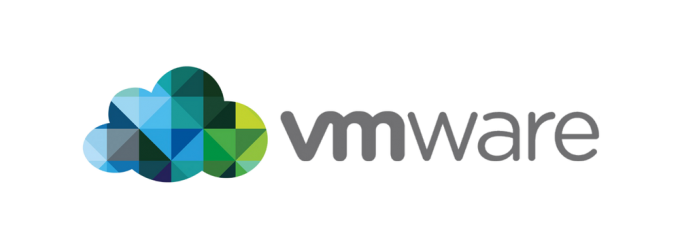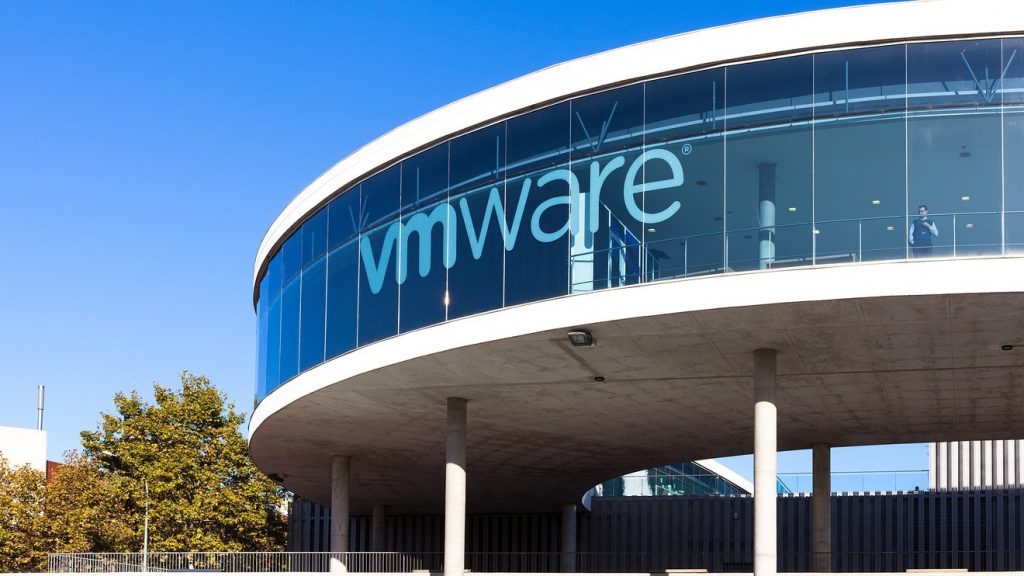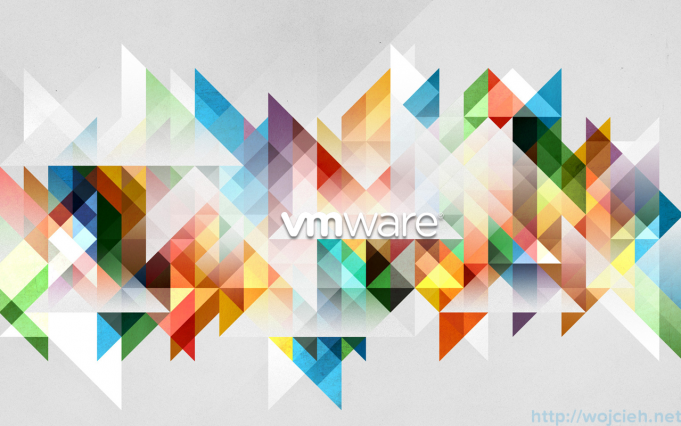This report provides the last five years revenues and revenue growth of VMWare Inc (VMW) from 2012 to 2016. VMWare generated a total of $7.1 billion revenues during 2016. VMWare reported a revenue growth of 7.9% year-over-year during 2016. The revenues and the revenue growth correspond to the fiscal year ending in December.
VMWARE REVENUES FROM 2012 TO 2016
Here are the revenues and the revenue growth details of VMWare during the last five years:
- VMWare generated a total of $4.6 billion revenues during 2012. VMWare reported a revenue growth of 22.2% year-over-year during 2012.
- VMWare generated a total of $5.2 billion revenues during 2013. VMWare reported a revenue growth of 13.1% year-over-year during 2013.
- VMWare generated a total of $6 billion revenues during 2014. VMWare reported a revenue growth of 15.9% year-over-year during 2014.
- VMWare generated a total of $6.6 billion revenues during 2015. VMWare reported a revenue growth of 8.9% year-over-year during 2015.
- VMWare generated a total of $7.1 billion revenues during 2016. VMWare reported a revenue growth of 7.9% year-over-year during 2016.

WHY ANALYZE REVENUE GROWTH?
Revenue growth is the most commonly analyzed financial metric. Revenue Growth is the percent increase (or decrease) of a company’s revenue between two time periods. It is computed by using the following formula: ((revenues during the time period two – revenues during the time period one) / revenues during the time period one)*100. If the time periods are two consecutive years, then the revenue growth is referred to as the annual revenue growth year-over-year. If the time periods are two consecutive quarters, then the revenue growth is referred to as the quarterly revenue growth quarter-over-quarter. If the time periods refer to the same quarter in the two consecutive years, then the revenue growth is referred to as quarterly revenue growth year-over-year. In case the time periods are two non-consecutive years, then the revenue CAGR (Commutative Annual Growth Rate) is computed.
Revenue growth analysis is important for a number of reasons. First, it helps in understanding how a business is performing. If the revenue growth rates are positive, it means the business is performing well and the revenues are increasing. If the revenue growth rates are negative, it means the revenues are declining and the company needs to take measures to increase them. If they don’t, the company will continue to shrink. Second, a company’s historical revenue growth analysis along with the market size and market share analysis helps in forecasting the future revenues of a company. Third, a comparison of a company’s growth rates with its competitors helps in determining who is winning more business. A revenue growth higher than the industry average translates into increasing market share. Companies with very high revenue growth rates have the potential to be the industry disrupters.

VMWARE RANKING
With $7.1 billion revenues, VMWare ranked number 387 in the R&P; Research list of top-3000 public companies in the US by revenues during 2016. Each one of the top-3000 companies generated more than $50 million of annual revenues during 2016.
The top-20 companies in the US by revenues during 2016 were:
- Walmart ($482.1 billion)
- ExxonMobil ($226.1 billion)
- Berkshire Hathaway ($223.6 billion)
- Apple ($215.6 billion)
- McKesson ($190.9 billion)
- UnitedHealth Group ($184.8 billion)
- CVS Health ($177.5 billion)
- General Motors ($166.4 billion)
- AT&T; ($163.8 billion)
- Ford Motor ($151.8 billion)
- AmerisourceBergen ($146.8 billion)
- Amazon ($136 billion)
- Verizon ($126 billion)
- General Electric ($123.7 billion)
- Cardinal Health ($121.5 billion)
- Costco ($118.7 billion)
- Walgreens Boots Alliance ($117.4 billion)
- Chevron ($114.5 billion)
- Kroger ($109.8 billion)
- Express Scripts Holding ($100.3 billion)
For the purpose of performance benchmarking of a company with a sector or industry average, R&P; Research associates every company with one sector and one industry. An industry consists of companies with related/similar business models. A sector comprises of a group of related/similar industries. For example, Life Sciences sector is comprised of following industries: Pharmaceuticals; Medical Devices; Biotechnology; Diagnostics & Scientific Instruments.
VMWare is associated with Technology Sector and Software Industry.
With $7.1 billion revenues, VMWare ranked number 38 of all the companies in the US Technology sector. There were a total of 406 public companies in the US Technology sector that had revenues greater than $50 million during 2016.

The top-10 companies in the US Technology sector by revenues during 2016 were:
- Apple ($215.6 billion)
- Amazon ($136 billion)
- Alphabet ($90.3 billion)
- Microsoft ($85.3 billion)
- IBM ($79.9 billion)
- Intel ($59.4 billion)
- Hewlett Packard Enterprise ($50.1 billion)
- Cisco Systems ($49.2 billion)
- HP ($48.2 billion)
- Oracle ($37 billion)
Technology sector is comprised of the following industries: Computers Systems and Peripherals; Software; Semiconductor; IT Consulting and Outsourcing Services; Networking Equipment and Services; Internet; Other. The definitions for each of the industries is as follows:
- Computers Systems and Peripherals industry includes companies primarily engaged in manufacturing of personal computers, servers, mainframes, workstations, and other computer accessories and peripherals such as storage drives, mice, keyboards and printers. It also includes manufacturers of mobile phones and tablets.
- Software industry includes businesses providing software products such as operating systems, productivity suites, enterprise software, data and analysis software, advertising and marketing software, engineering and manufacturing software, networking software, and IT management software. It also includes companies providing industry-specific software focused on different sectors such as Financials, Automotive, Telecom, Utilities, Travel, Real Estate, Media, and Publishing.
- Semiconductor industry includes companies primarily engaged in manufacturing and distribution of semiconductor products such as microprocessors, chipsets, motherboards, flash memory, and wired and wireless connectivity products. It also includes companies that provide semiconductor equipment and services to the semiconductor industry.
- IT Consulting and Outsourcing Services industry includes companies primarily engaged in providing information technology consulting and outsourcing services to other businesses. The services include IT consulting, systems integration, application development and management, IT infrastructure management, and network operations management.
- Networking Equipment and Services industry includes companies primarily engaged in manufacturing and distribution of networking and communications equipment for transporting data, voice, and video traffic across intranets, extranets, and the Internet. The key products include routers and switches for local and wide-area networks, cable modems, teleconferencing equipment, and wireless access points.
- Internet industry includes Internet-based businesses providing products and services such as search engines, social networking, web hosting, email, domain name registration, and eCommerce. It also includes industry information/services portals focused on different sectors such as Financials, Automotive, Travel, Health, Real Estate, Media, and Publishing.
- Other industry includes companies providing products such as photocopiers, fax machines, point of sale machines, audio/video technologies, and video games. It also includes technology companies that are not part of other six technology industries.
With $7.1 billion revenues, VMWare ranked number 3 of all the companies in the US Software industry. There were a total of 140 public companies in the US Software industry that had revenues greater than $50 million during 2016.

The top-10 companies in the US Software industry by revenues during 2016 were:
- Microsoft ($85.3 billion)
- Oracle ($37 billion)
- VMWare ($7.1 billion)
- Salesforce.com ($6.7 billion)
- Adobe Systems ($5.9 billion)
- Intuit ($4.7 billion)
- CA Technologies ($4 billion)
- Symantec ($3.6 billion)
- ScanSource ($3.5 billion)
- Citrix Systems ($3.4 billion)
COMPANIES SEGMENTATION
To identify and analyze high/low growth or most/least profitable similar-size companies in different sectors or industries, R&P; research classifies all companies into different segments based upon their revenues, revenue growth, and net profit margins.
Based upon their annual revenues, the companies are classified into one of the following four segments:
- Mega companies, having revenues greater than $50 billion.
- Very Large companies, having revenues between $10 billion and $50 billion.
- Large companies, having revenues between $1 billion and $10 billion.
- Mid-size companies, having revenues between $50 million and $1 billion.
With $7.1 billion revenues, VMWare was in the Large companies revenue segment during 2016. There were a total of 1097 companies in the Large companies revenue segment during 2016.

Based upon their annual revenue growth, the companies are classified into one of the following eight segments:
- Very High positive growth companies, having annual revenue growth greater than 50%.
- High positive growth companies, having annual revenue growth between 20% and 50%.
- Medium positive growth companies, having annual revenue growth between 5% and 20%.
- Low positive growth companies, having annual revenue growth between 0% and 5%.
- Low negative growth companies, having annual revenue growth between -5% and 0%.
- Medium negative growth companies, having annual revenue growth between -20% and -5%.
- High negative growth companies, having annual revenue growth between -50% and -20%.
- Very High negative growth companies, having annual revenue growth less than -50%.
With 7.9% revenue growth year-over-year, VMWare was in the Medium positive revenue growth segment during 2016. There were a total of 876 companies in the Medium positive revenue growth segment during 2016. Of the US top-3000 companies, 1985 (nearly two-third of the total) had positive revenue growth and 1015 (nearly one-third of the total) had negative revenue growth during 2016.
Based upon their annual net profit margin, the companies are classified into one of the following eight segments:
- Very High positive margin companies, having net profit margin greater than 50%.
- High positive margin companies, having net profit margin between 20% and 50%.
- Medium positive margin companies, having net profit margin between 5% and 20%.
- Low positive margin companies, having net profit margin between 0% and 5%.
- Low negative margin companies, having net profit margin between -5% and 0%.
- Medium negative margin companies, having net profit margin between -20% and -5%.
- High negative margin companies, having net profit margin between -50% and -20%.
- Very High negative margin companies, having net profit margin less than -50%.

With a net margin of 16.7%, VMWare was in the Medium positive net profit margin segment during 2016. There were a total of 1086 companies in the Medium positive net profit margin segment during 2016. Of the US top-3000 companies, 2244 (nearly three-fourth of the total) had positive net profit margin and 756 (nearly one-fourth of the total) had negative net profit margin during 2016.
COMPANY BUSINESS SUMMARY
VMware, Inc. provides virtualization and cloud infrastructure solutions in the United States and internationally. Its virtualization infrastructure solutions includes a suite of products and services designed to deliver a software-defined data center (SDDC), run on industry-standard desktop computers, servers, and mobile devices; and supports a range of operating system and application environments, as well as networking and storage infrastructures. The company offers VMware vSphere, a data center platform, which enables users to deploy hypervisor, a layer of software that resides between the operating system and system hardware to enable compute virtualization; storage and availability products that provide data storage and protection options; network and security products; and management and automation products to manage and automate overarching IT processes involved in provisioning IT services and resources to users from initial infrastructure deployment to retirement. It also provides SDDC suites, including VMware vCloud suite, vSphere with Operations Management, and VMware vRealize suite for building and managing a cloud infrastructure for use with the vSphere platform. In addition, the company offers Cloud Foundation, a SDDC delivery independent platform that can be deployed on-premises or run as-a-service. Further, it provides hybrid cloud computing solutions, such as VMware vCloud Air Network and vCloud Air; and end-user computing solutions that enable customers to securely deliver access to applications and data for their end users from various devices. The company sells its products through distributors, resellers, system vendors, and systems integrators. VMware, Inc. has a strategic alliance with Amazon Web Services to build and deliver an integrated hybrid solution; and a collaboration with Trend Micro Incorporated. The company was incorporated in 1998 and is headquartered in Palo Alto, California. VMware, Inc. is a subsidiary of Dell Technologies Inc.

DATA SOURCE
The chart and the data on this page are sourced from the R&P; Research Industry Intelligence Platform. The platform provides the key financial metrics for all the public companies in the United States. The platform empowers users to compare last five or 15 years financial data of a company with the other companies or the industry averages. This benchmarking exercise yields powerful insights that can drive better business decisions.
INDUSTRY PEERS AND COMPETITORS OF VMWARE
Microsoft (MSFT) Business Analysis – Analyze Historical Performance, Strategic Priorities, And…
Microsoft Corp with $85 billion revenues in the year 2016 was the number 1 Software company. Read this report to know the top competitors of Microsoft and identify growth and cost optimization opportunities of Microsoft
Oracle (ORCL) Business Analysis – Analyze Historical Performance, Strategic Priorities, And…
Oracle Corp with $37 billion revenues in the year 2016 was the number 2 Software company. Read this report to know the top competitors of Oracle and identify growth and cost optimization opportunities of Oracle
Salesforce.com (CRM) Business Analysis – Analyze Historical Performance, Strategic Priorities, And…
Salesforce Com Inc with $7 billion revenues in the year 2016 was the number 4 Software company. Read this report to know the top competitors of Salesforce.com and identify growth and cost optimization opportunities of Salesforce.com
Adobe Systems (ADBE) Business Analysis – Analyze Historical Performance, Strategic Priorities,…
Adobe Systems Inc with $6 billion revenues in the year 2016 was the number 5 Software company. Read this report to know the top competitors of Adobe Systems and identify growth and cost optimization opportunities of Adobe Systems
Intuit (INTU) Business Analysis – Analyze Historical Performance, Strategic Priorities, And…
Intuit Inc with $5 billion revenues in the year 2016 was the number 6 Software company. Read this report to know the top competitors of Intuit and identify growth and cost optimization opportunities of Intuit
CA Technologies (CA) Business Analysis – Analyze Historical Performance, Strategic Priorities,…
CA Technologies with $4 billion revenues in the year 2016 was the number 7 Software company. Read this report to know the top competitors of CA Technologies and identify growth and cost optimization opportunities of CA Technologies
REVENUES ANALYSIS
VMWare (VMW) Revenues And Revenue Growth From 2012 To 2016
This report provides the last five years revenues and revenue growth of VMWare Inc (VMW) from 2012 to 2016. VMWare generated a total of $7.1 billion revenues during 2016. VMWare reported a revenue growth of 7.9% year-over-year during 2016. The revenues and the revenue growth correspond to the fiscal year ending in December.
VMWare (VMW) Revenues And Revenue Growth From 2004 To 2016
This report provides the last thirteen years revenues and revenue growth of VMWare Inc (VMW) from 2004 to 2016. VMWare generated a total of $7.1 billion revenues during 2016. VMWare reported a revenue growth of 7.9% year-over-year during 2016. The revenues and the revenue growth correspond to the fiscal year ending in December.
VMWare (VMW) Revenue Growth Comparison With Industry Growth From 2012 To…
This report provides a comparison of VMWare Inc (VMW) revenue growth with Software industry growth during the last five years from 2012 to 2016. VMWare reported a revenue growth of 7.9% year-over-year during 2016. The Software industry growth was 0.9% year-over-year during 2016. VMWare growth was faster than the industry during 2016.
PROFIT ANALYSIS
VMWare (VMW) Net Profit And Net Margin From 2012 To 2016
This report provides the last five years net profit and net margin of VMWare Inc (VMW) from 2012 to 2016. VMWare reported a total net income of $1.2 billion during 2016. VMWare generated a total of $7.1 billion revenues during 2016. VMWare net profit margin was 16.7% during 2016. The net profit and the net profit margin correspond to the fiscal year ending in December.
VMWare (VMW) Net Profit And Net Margin From 2004 To 2016
This report provides the last thirteen years net profit and net margin of VMWare Inc (VMW) from 2004 to 2016. VMWare reported a total net income of $1.2 billion during 2016. VMWare generated a total of $7.1 billion revenues during 2016. VMWare net profit margin was 16.7% during 2016. The net profit and the net profit margin correspond to the fiscal year ending in December.
VMWare (VMW) Net Profit Margin Comparison With Industry From 2012 To…
This report provides a comparison of VMWare Inc (VMW) net profit margin with Software industry net profit margin during the last five years from 2012 to 2016. VMWare reported a net profit margin of 16.7% during 2016. The Software industry net profit margin was 13.6% during 2016. VMWare was more profitable than the industry during 2016.
COST & EXPENSES ANALYSIS
VMWare (VMW) Cost of Sales (COGS) Analysis From 2012 To 2016
This report provides the last five years cost of sales (COGS) analysis of VMWare Inc (VMW) from 2012 to 2016. VMWare spent a total of $1.1 billion on COGS during 2016. VMWare generated a total of $7.1 billion revenues during 2016. As a percentage of revenues, VMWare spent 14.8% of its total revenues on COGS during 2016. The cost of sales (COGS) numbers are for the fiscal year ending in December.
VMWare (VMW) Research & Development (R&D) Spending Analysis From 2012 To…
This report provides the last five years research and development (R&D;) expenses of VMWare Inc (VMW) from 2012 to 2016. VMWare spent a total of $1.5 billion on research and development (R&D;) activities during 2016. VMWare generated a total of $7.1 billion revenues during 2016. As a percentage of revenues, VMWare spent 21.2% of its total revenues on R&D; activities during 2016. The R&D; spending numbers are for the fiscal year ending in December.
VMWare (VMW) Sales, Marketing, General & Administrative (SG&A) Spending Analysis From…
This report provides the last five years sales, marketing, general & administrative (SG&A;) expenses of VMWare Inc (VMW) from 2012 to 2016. VMWare spent a total of $3 billion on sales, marketing, general, and administrative (SG&A;) activities during 2016. VMWare generated a total of $7.1 billion revenues during 2016. As a percentage of revenues, VMWare spent 42.9% of its total revenues on SG&A; activities during 2016. The SG&A; spending numbers are for the fiscal year ending in December.
WORKING CAPITAL ANALYSIS
VMWare (VMW) Inventory Spending Analysis 2016
Inventory spending analysis for VMWare is not available because either the company does not provide the data or we don’t have it.
VMWare (VMW) Accounts Receivable (A/R) Analysis From 2012 To 2016
This report provides the last five years Accounts Receivable (A/R) analysis of VMWare Inc (VMW) from 2012 to 2016. VMWare invested a total of $2 billion on accounts receivable during 2016. VMWare generated a total of $7.1 billion revenues during 2016. As a percentage of revenues, VMWare invested 28% of its total revenues on accounts receivable during 2016. The accounts receivable numbers are for the fiscal year ending in December.
VMWare (VMW) Accounts Payable (A/P) Analysis From 2012 To 2016
This report provides the last five years Accounts Payable (A/P) analysis of VMWare Inc (VMW) from 2012 to 2016. VMWare invested a total of $125 million on accounts payable during 2016. VMWare generated a total of $7.1 billion revenues during 2016. As a percentage of revenues, VMWare invested 1.8% of its total revenues on accounts payable activities during 2016. The accounts payable numbers are for the fiscal year ending in December.
ASSET MANAGEMENT ANALYSIS
VMWare (VMW) Property, Plant & Equipment (PP&E) Investment Analysis From 2012…
This report provides the last five years property, plant & equipment (PP&E;) investment analysis of VMWare Inc (VMW) from 2012 to 2016. VMWare invested a total of $1 billion on property, plant & equipment (PP&E;) activities during 2016. VMWare generated a total of $7.1 billion revenues during 2016. As a percentage of revenues, VMWare invested 14.8% of its total revenues on PP&E; activities during 2016. The PP&E; investment numbers are for the fiscal year ending in December.
VMWare (VMW) Intangible Assets Analysis From 2012 To 2016
This report provides the last five years Intangible assets analysis of VMWare Inc (VMW) from 2012 to 2016. VMWare invested a total of $4.5 billion on Intangible assets during 2016. VMWare generated a total of $7.1 billion revenues during 2016. As a percentage of revenues, VMWare invested 64.1% of its total revenues on intangible assets during 2016. The Intangible asset numbers are for the fiscal year ending in December.
















